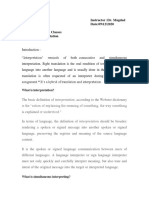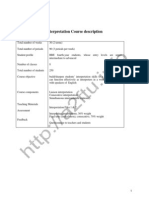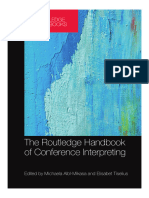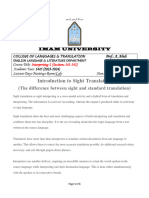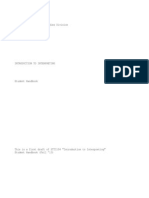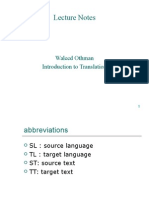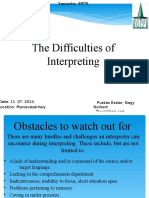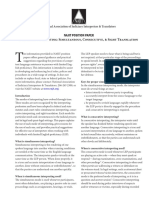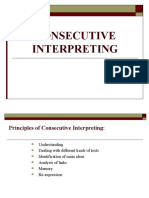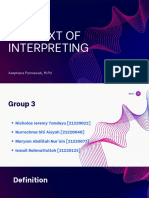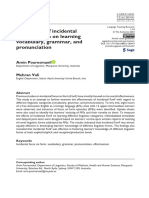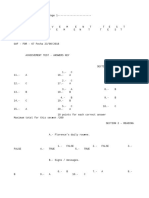0% found this document useful (0 votes)
241 views31 pagesWeek 1: Some Issues in Translation Practice & Interpreting Practice
This document provides an overview of translation and interpreting. It discusses key concepts such as defining translation as transferring meaning from one language to another, and interpreting as orally communicating messages between languages. The document also outlines important skills for translators and interpreters, such as language proficiency and cultural knowledge. Finally, it reviews common translation techniques like borrowing words, and interpreting techniques like consecutive and simultaneous interpretation.
Uploaded by
Vân AnhCopyright
© © All Rights Reserved
We take content rights seriously. If you suspect this is your content, claim it here.
Available Formats
Download as PPTX, PDF, TXT or read online on Scribd
0% found this document useful (0 votes)
241 views31 pagesWeek 1: Some Issues in Translation Practice & Interpreting Practice
This document provides an overview of translation and interpreting. It discusses key concepts such as defining translation as transferring meaning from one language to another, and interpreting as orally communicating messages between languages. The document also outlines important skills for translators and interpreters, such as language proficiency and cultural knowledge. Finally, it reviews common translation techniques like borrowing words, and interpreting techniques like consecutive and simultaneous interpretation.
Uploaded by
Vân AnhCopyright
© © All Rights Reserved
We take content rights seriously. If you suspect this is your content, claim it here.
Available Formats
Download as PPTX, PDF, TXT or read online on Scribd
/ 31

